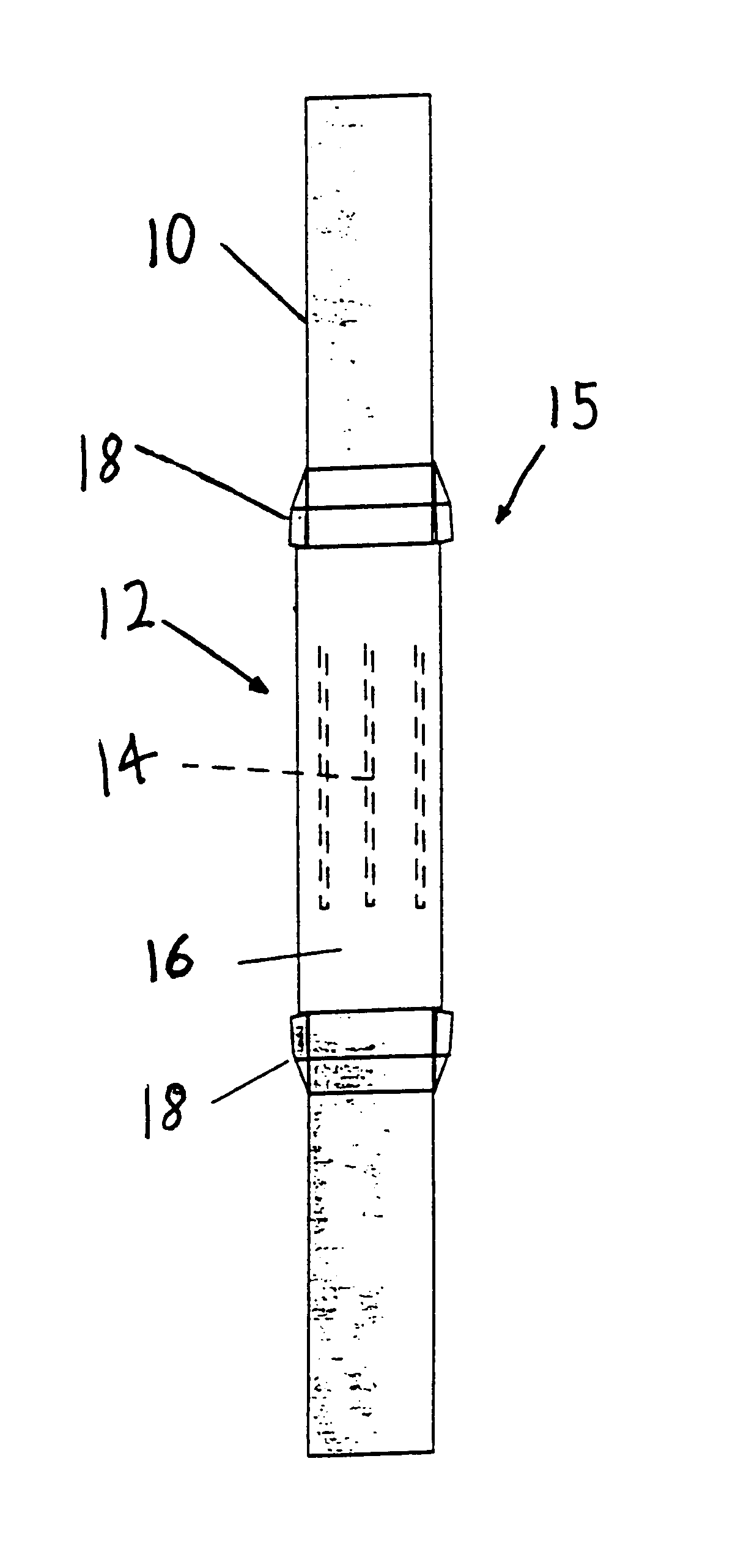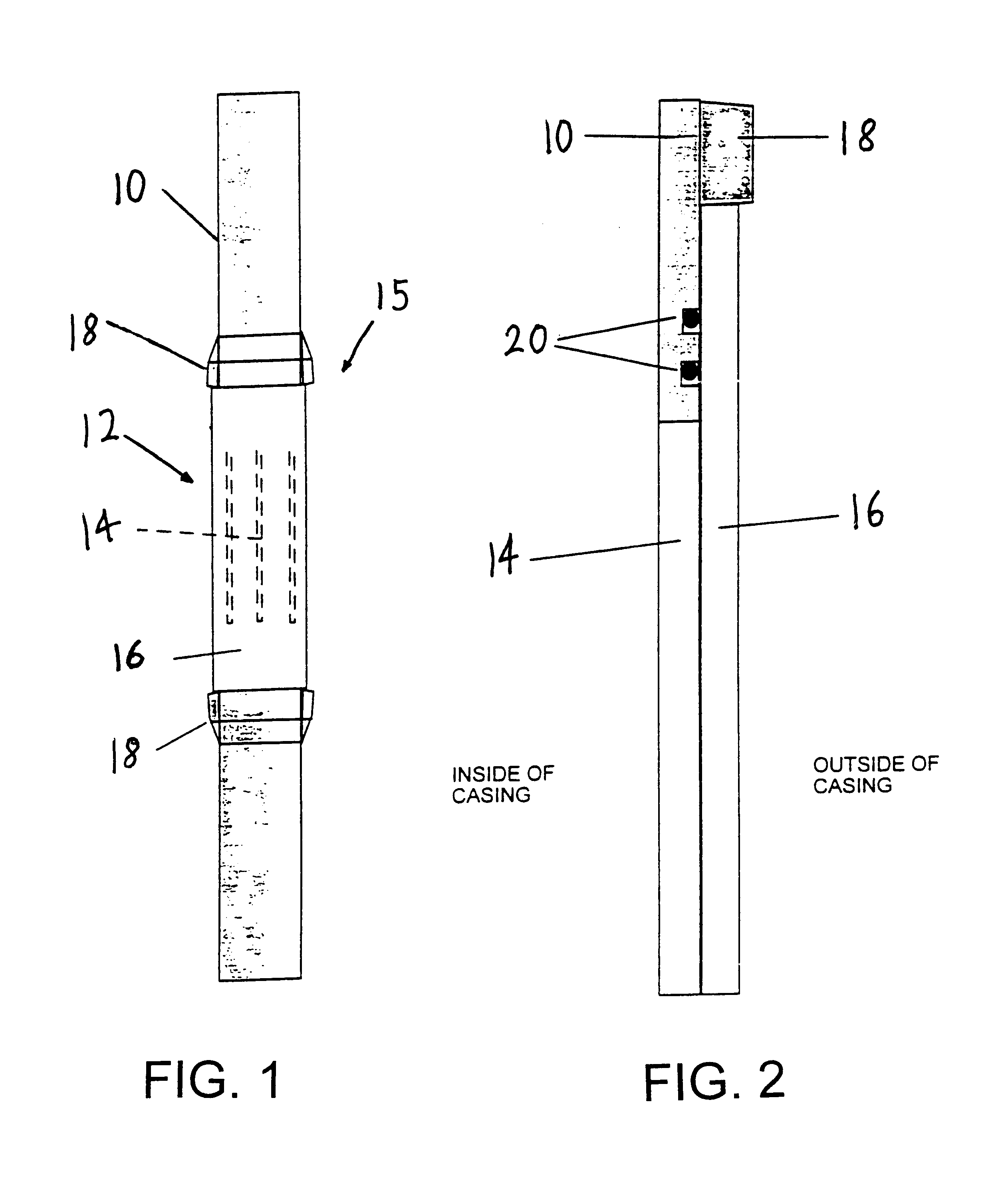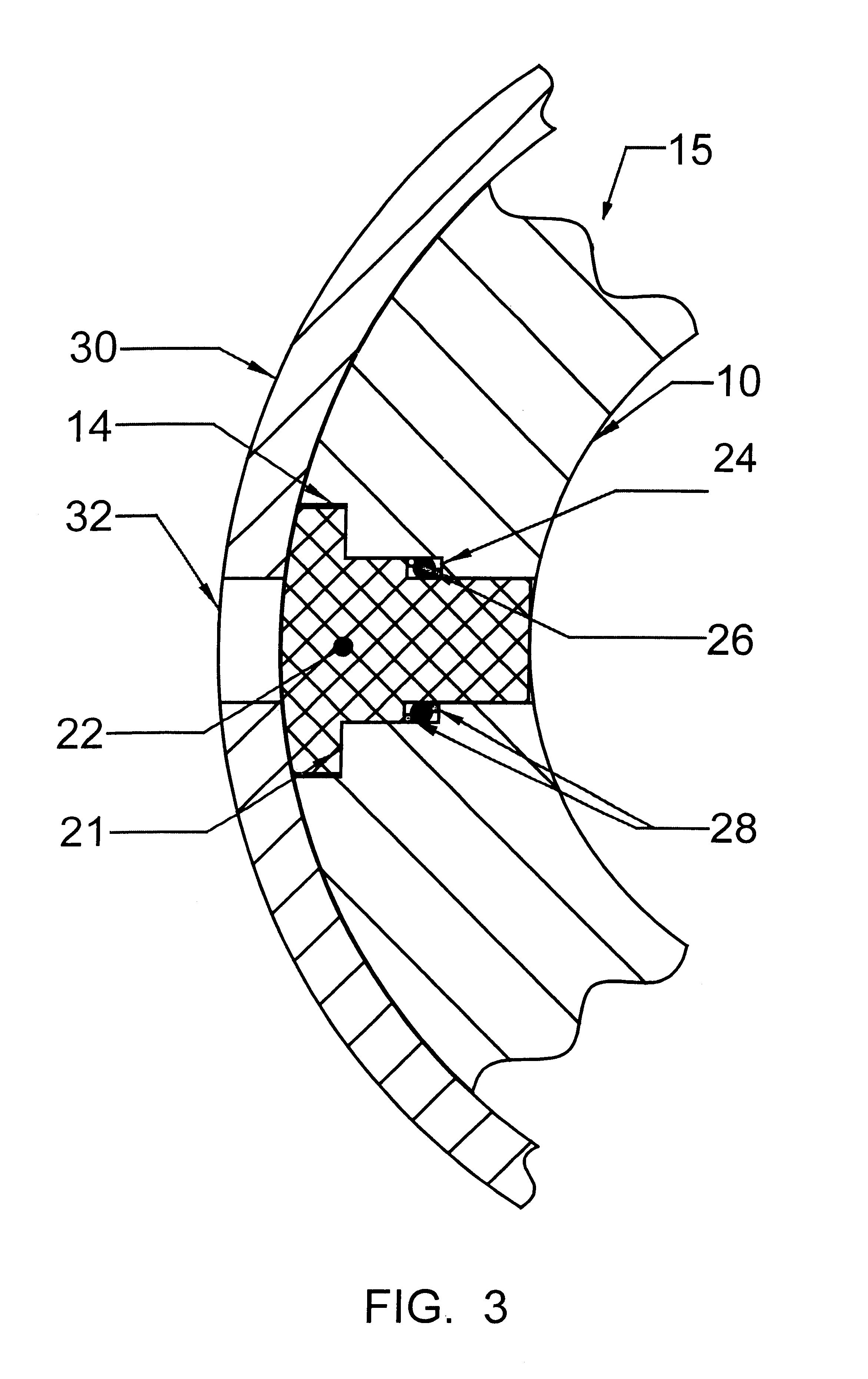Subsurface monitoring and borehole placement using a modified tubular equipped with tilted or transverse magnetic dipoles
a technology of magnetic dipoles and subsurface monitoring, which is applied in the direction of surveying, borehole/well accessories, instruments, etc., can solve the problems of shallow depth of investigation, adversely affecting the extraction of petroleum, and low porosity accuracy
- Summary
- Abstract
- Description
- Claims
- Application Information
AI Technical Summary
Benefits of technology
Problems solved by technology
Method used
Image
Examples
Embodiment Construction
4.1 Slotted Tubular
FIG. 1 shows a tubular or casing 10 segment of the invention. The metal tubular 10 includes a station 12 with axial slots 14 cut through the tubular wall. Each elongated axial slot 14 fully penetrates the tubular wall of the casing 10. Hydraulic isolation between the interior and exterior of the casing 10 is provided by an insulating structure 15. The structure 15 includes an insulator 16 formed in the shape of a cylindrical tube or sleeve to enclose the slotted station 12. FIG. 2 shows a cross section of an insulator 16 placed over a slot 14 on the exterior of the casing 10. The insulator 16 is slid over the slots 14 with one or more O-rings 20 providing a seal. Alternatively, the insulator 16 may be placed inside the tubular casing 10, rather than outside (not shown).
The insulator 16 is made of a nonconductive material, permitting the passage of EM energy. Useable materials include the class of polyetherketones described in U.S. Pat. No. 4,320,224, or other suit...
PUM
 Login to View More
Login to View More Abstract
Description
Claims
Application Information
 Login to View More
Login to View More - R&D
- Intellectual Property
- Life Sciences
- Materials
- Tech Scout
- Unparalleled Data Quality
- Higher Quality Content
- 60% Fewer Hallucinations
Browse by: Latest US Patents, China's latest patents, Technical Efficacy Thesaurus, Application Domain, Technology Topic, Popular Technical Reports.
© 2025 PatSnap. All rights reserved.Legal|Privacy policy|Modern Slavery Act Transparency Statement|Sitemap|About US| Contact US: help@patsnap.com



